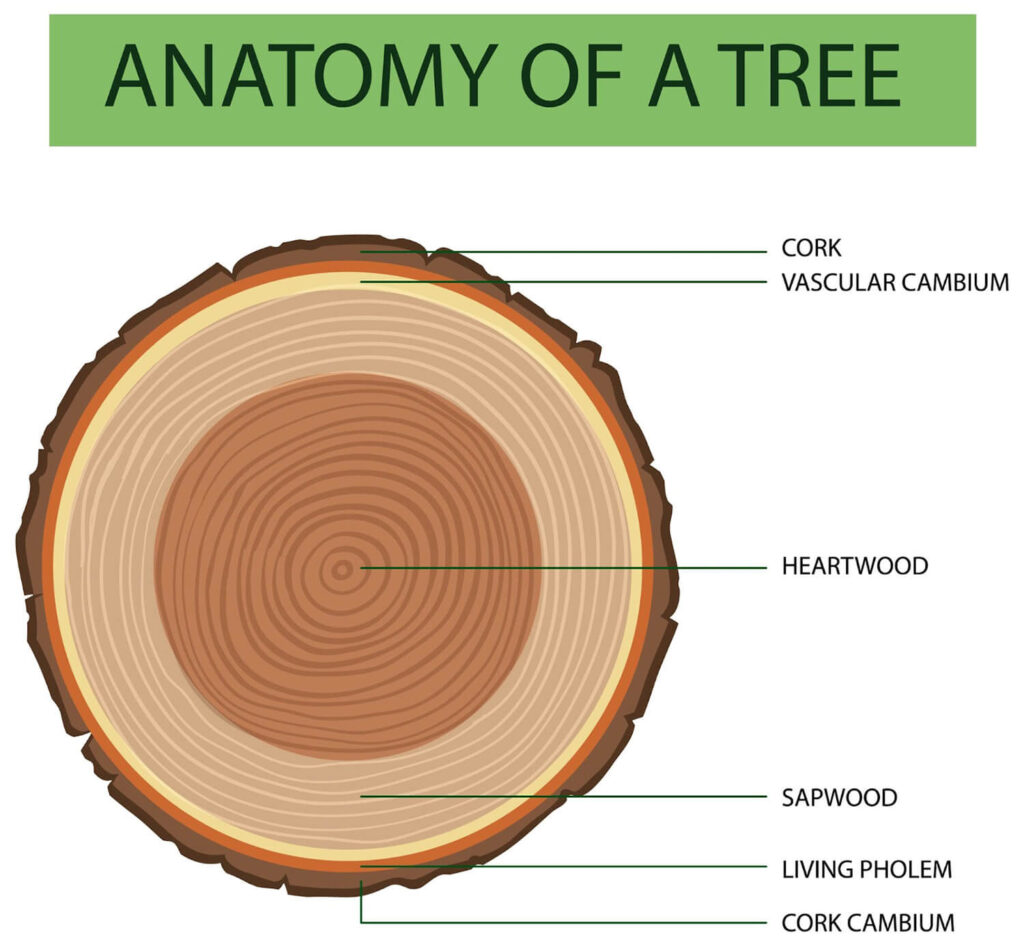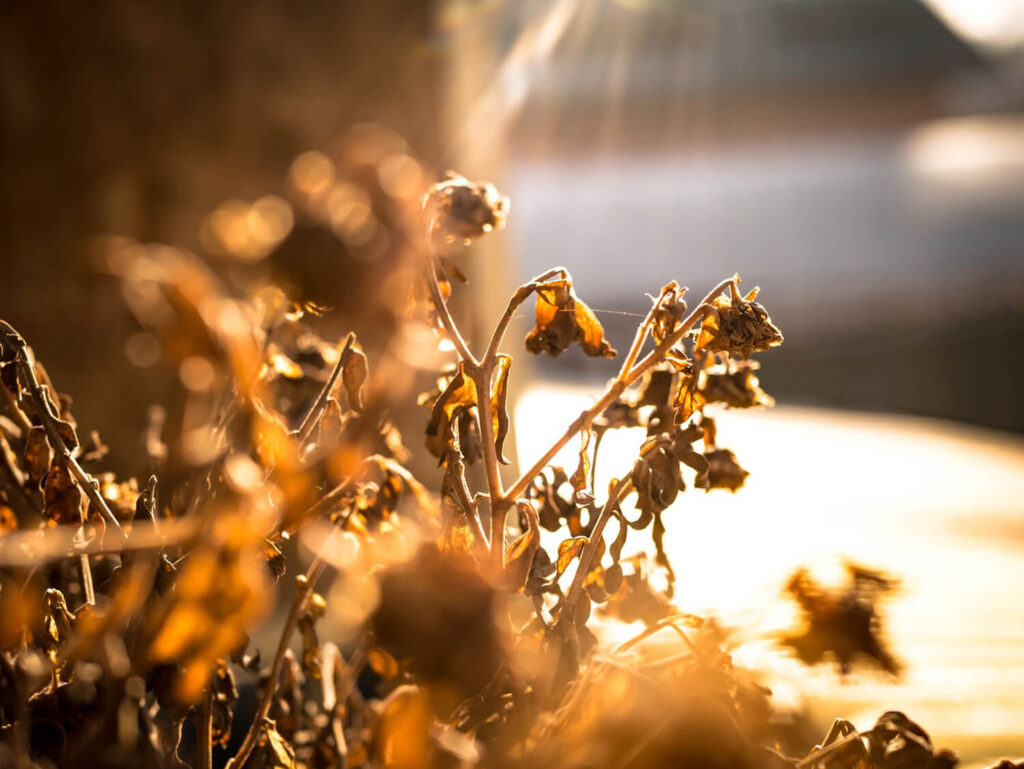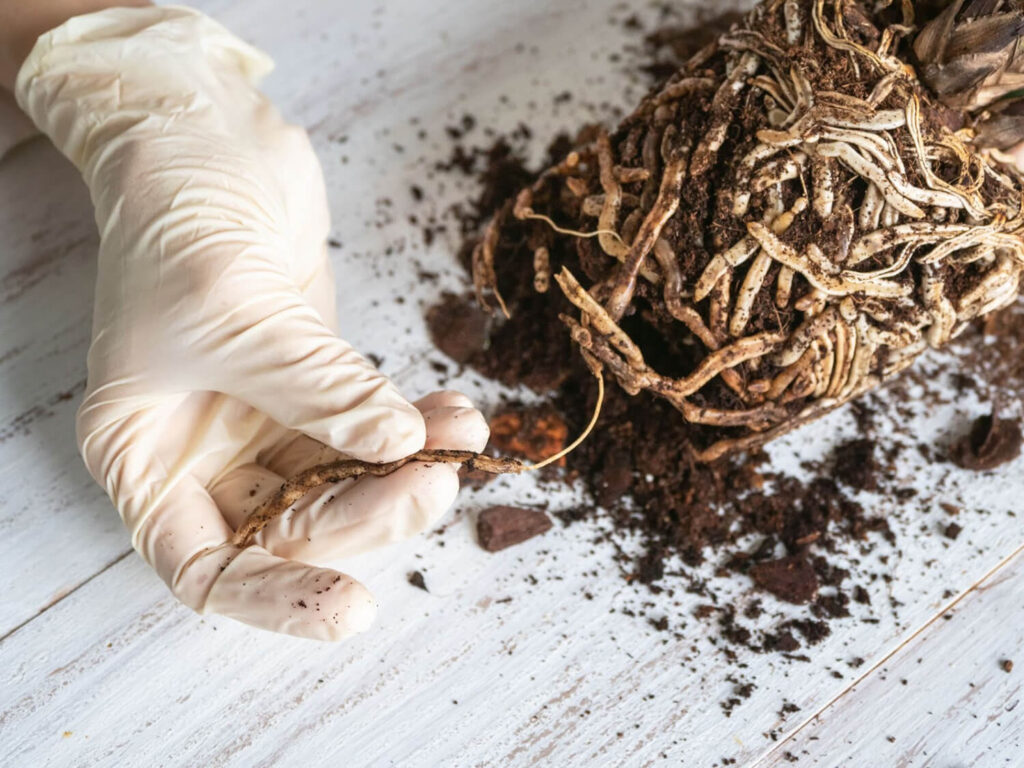Learning how to revive a bonsai tree can be tricky and challenging for some people. To bring your tree back to life, you’d have to know first what the signs indicate and what possibly caused them.
To help you out, below is a complete guide on how you can save your bonsai tree from dying.
Continue reading to learn:
- How to properly and effectively revive a bonsai tree.
- 6 telltale signs of a dying bonsai tree and their causes.
- How fast a sick bonsai tree can recover from treatment.
- How to identify whether your tree is dying or already dead.
- And so much more…
How to Know Whether You Have a Dying or Dead Bonsai Tree?
Before you do anything, check first whether your tree is salvageable. You can do that by checking your tree’s cambium.
Cambium is a thin cell layer of the tree between the xylem (bark) and phloem (plant tissue) that promotes the secondary growth of the plant. You can find it throughout the whole body of the plant—from its roots to the last stem of its apex.

Here’s how you can check the cambium of your bonsai tree:
- Grab any sharp tool.
- Make a small scar in any area of a stem.
If you see a green layer, it means that your bonsai is still alive and can be revived. Your next step would be to learn ‘how to revive a bonsai tree‘, which you can explore in the next section below.
However, if it’s dark or grayish, you have a dead bonsai tree that can no longer be saved. You should discard it and start anew by buying a new tree and a bonsai kit.
You can also watch this video to learn how to determine whether a bonsai tree is salvageable or not:
6 Telltale Signs of a Dying Bonsai Tree and How to Revive It
Bonsai trees don’t generally die out of old age. Most of them die due to improper care or neglect.
That being said, if you want to know how to revive your bonsai tree and avoid committing the same mistakes, you must pinpoint what could have caused it.
Most common signs of a sick bonsai:
- Drooping or wilting leaves
- Yellowing of leaves
- Browning, drying leaves
- Root rot
- Pest infestation
- Fungal disease
Sign #1: Drooping or wilting leaves
Drooping or wilting leaves are among the most common signs of a sick or dying bonsai tree. It indicates that the plant is unhealthy and suffering.
Possible causes
Many things can cause droop or wilted leaves, including the following:
- Underwatering
- Insufficient light
- Fungal infection
- Overwatering (which may lead to root rot)
- Improper placement, particularly placing an outdoor tree indoors
Treatments
Depending on the condition of your bonsai plant, you may need to perform one or several treatments to revive it.
Here are some things you can do:
1. Place it in a good and proper location
Strategically positioning your tree is one of the basic bonsai care requirements.
If it’s an outdoor bonsai, move it to a spot outside that receives morning sun and afternoon shade. If it’s an indoor bonsai, place it in a south-facing window with natural light and good humidity.
2. Water it adequately
Is your bonsai potting soil dry? Then, your tree is underwatered. To treat that, water your bonsai tree thoroughly until the water runs out of the pot drainage. Then, re-water once the soil becomes slightly dry.
Tip: You may also place sphagnum moss on the surface soil or cover the whole pot in plastic to retain moisture.
If the soil doesn’t get dry and remains wet, your bonsai is overwatered. Avoid watering it until the soil becomes slightly dry. You may also repot during the growing season with well-draining bonsai soil. Use also a bonsai pot with drainage holes to drain excess water.
Note: For fungal disease treatment, refer to the care guide below.
Sign #2: Yellowing of leaves
Abnormal yellowing of leaves is also a common sign of a sick bonsai. If not treated immediately, these leaves can dry out and die completely.
Note: Don’t confuse it with some deciduous bonsai tree species that turn their leaves yellow during the fall season.
Possible causes
This occurrence can be caused by improper care or disease, particularly:
- Fungal disease
- Lack of nutrients
- Improper watering
- Too much sunlight
Treatments
Underwatering or overwatering is often the cause of abnormal yellowing of leaves. If this is your case, adjust your watering frequency. You may also repot your tree using a new bonsai soil mix.
If the temperature and heat outside are too high, move your bonsai to a different spot—ideally, where it can receive enough natural light and partial shade. Also, if you notice unusual spots in the leaves and branches that may indicate fungal infections, treat them immediately.
Still didn’t work? Then, your bonsai tree might be weak and need extra nutrients. Generally, you’d need to fertilize your plants during the growing season to promote healthier and faster growth. You can use either slow-release fertilizer pellets or liquid concentrate on your trees.
Sign #3: Browning, drying leaves

Brown leaves are often an indication of neglected or poorly cared-for bonsai plants. When left untreated, the leaves can become brittle and soon fall off.
Possible causes
Here are some possible causes of brown, dried-out bonsai tree leaves:
- Lack of nutrients
- Presence of pests
- Improper placement
- Under or overwatering
- Lack of sufficient sunlight
Treatments
Remove the brown, dying leaves from the bonsai plant so they won’t take unnecessary energy. You can prune the leaves by pulling them off or using a pair of bonsai pruning shears.
If it’s due to underwatering, place sphagnum moss on top of the soil or cover the whole pot in plastic to keep as much moisture as possible. Relocating dying bonsai trees to a spot with good humidity and natural light also helps keep them in optimal shape.
Check also whether your bonsai tree species can thrive indoors. If not, keep it outdoors year-round and provide winter protection as needed.
Sign #4: Pest infestation
If you don’t think you’ve made any of the common mistakes mentioned above, but your bonsai looks sick, check its bonsai leaves or branches for pests.
The presence of pests can deteriorate the health of your bonsai tree and even cause it to die if left untreated.
Possible causes
Many kinds of pests can infect your bonsai, here are just some of the commonly found ones on bonsai trees:
- Aphids – soft-bodied insects usually found on the underside of the leaves. They suck the plants’ sap causing bonsai trees to lose vigor. Some common signs of infestation are wilting, yellowing, or abnormal dropping of leaves.
- Spider mites – small, oval-shaped pests that prefer dry, warm climates with low humidity. Common signs of infestation include yellow or white spots on the leaves and silky webs around the stems.
- Mealybugs – soft-bodied, wax-covered insects that suck sap from the phloem. They thrive in warm weather and prefer hidden, protected areas such as branch crotches. Common signs of infestation are traces of sticky honeydew and wax and abnormal leaf drops.
- Caterpillars – Feeds on leaves or wood, depending on the species. They leave holes in the leaves and small, black droppings in their paths.
- Scale insects – small, wax-covered insects that suck plant sap. They also excrete sticky honeydew, which promotes the growth of sooty mold.
- Vine weevils – a group of several families of beetles. Adult species feed on leaves during spring and summer, while grubs eat the plant’s roots during autumn and winter.
Treatments
Depending on the type of pest present in your bonsai, here’s how you can properly treat them:
1. Aphids
- Rinse off infested leaves with water
- Apply neem oil insecticide on affected areas
- Spray infested areas with a mixture of 2 tbsp of liquid soap and 30 oz of water
2. Spider mites
- Apple insecticide
- Spray water directly on pests
- Move the bonsai plant to a spot with good humidity
- Dab isopropyl alcohol on infested areas using cotton balls
3. Mealybugs
- Apply neem oil insecticide directly on pests
- Dab 70% isopropyl alcohol solution with water on small colonies
- Apply a mixture of 1 tbsp dish soap and a quart of water every few days
- Spray 10 to 25% isopropyl alcohol solution on larger colonies every week until removed
4. Caterpillars
- Cut off affected leaves
- Remove by hand or using any tool
- If under the bark, remove affected parts and spray hot water onto it
5. Scale insects
- Spray using pressure water with a broad point
- Apply insecticides on young insects for several weeks
- Remove mature insects by hand or using any tool like tweezers
- Dab isopropyl alcohol solution on scale insects to loosen them up
6. Vine weevils
- Remove by hand or using any tool
- Apply insecticides directly on pests
Tip: To prevent pest infestation in the future, make sure to examine your bonsai tree at least once a week. Check the underside of the leaves, stems, branches, trunk, and soil surface for pests.
Sign #5: Root rot

Root rot can happen to any bonsai tree species, but especially to those that don’t like “wet feet.” Depending on its severity, you may or may not be able to revive a bonsai tree with diseased roots. That’s why spotting a possible root rot early on is very crucial.
Some signs of possible root rot on bonsai trees:
- Distinct rotten smell
- Yellowing, wilting, or curled leaves
- Presence of fungus on the soil surface
Here are two ways to detect rotten smell on a bonsai tree:
- Try to smell from the top layer of the soil.
- Lift the bonsai pot and smell from the pot drainage holes.
Possible causes
More than overwatering, here are a few reasons why root rot happens:
- Waterlogged bonsai soil
- Fungal or bacterial infection due to pathogens
Treatments
Before following any treatments, check the whole root system first. Identify which ones are healthy, infected, or already dead. Again, you can do this by checking the cambium layer.
5 Easy steps to treat root rot
Now that you’ve identified which roots are salvageable, here’s what you should do next:
Step 1: Prune the roots. Prune the diseased and dead roots using any bonsai cutting tool, such as a pair of sharp pruning shears.
Step 2: Keep the healthy roots moist. While preparing your bonsai tree for repotting, make sure that its roots remain moist by either:
- Submerging the roots of your bonsai in the water
- Covering the entire root system with a damp cloth
- Letting its whole root system sit in a 1:1 hydrogen peroxide and water mixture (especially if pathogens caused the root rot)
Regardless of your chosen process, you should only do it for about 10 to 15 minutes.
Tip: Some even sprinkle a thin layer of non-flavored cinnamon on the roots, as it has antibacterial qualities that can help prevent mold or mildew buildup.
Step 3: Prepare a new pot. Use a new or at least a sterilized bonsai pot to avoid pathogens left on the pot from infecting the bonsai soil and roots again.
If your bonsai needs to recover from extreme damage, you may repot it in a regular garden pot as it recovers. Then, transfer it to a bonsai pot with drainage holes once healthy.
Step 4: Repot as usual. Prepare a new bonsai soil mix when repotting your bonsai tree.
Step 5: Place in an ideal spot. Move it to a spot with good air circulation, good humidity, and direct sunlight.
Sign #6: Fungal disease

Most bonsai species are prone to fungal diseases. Some can easily be spotted, while others would only become noticeable once the leaves, branches, or trunk are infested.
Possible causes
Several types of fungal diseases can infect plants, but here are just some of the most common ones that affect bonsai trees.
1. Fungal rust
As its name suggests, fungal rust disease leaves rust-looking spots on the bonsai tree leaves.
It’s caused by rust-causing fungal pathogens that spread by the wind or water. Hence, rust disease often occurs after watering. Such pathogens thrive in environments with moist and humid conditions.
Although rust can’t cause your tree to die instantly, it can lose the vigor of your bonsai as more rust covers the green foliage.
2. Powdery mildew
Powdery mildew is caused by several closely-related fungi that create spores, which are then spread by the wind. It settles on the upper side of the leaves, stems, and flower petals.
Powdery mildew-causing fungi thrive during spring when the temperature rises above 60°F (15.5°C). Then, they continue to strive until winter.
Like rust, this can also lose the vigor of your bonsai tree when left untreated for a long time.
Here’s a list of some specific bonsai species that are prone to powdery mildew:
- Azalea
- Wisteria
- Dogwood
- Pyracantha
- Crape myrtle
3. Leaf blight
Leaf blight appears as black or dark brown spots on both young and old leaves.
It’s also caused by fungi pathogens that produce spores. They settle on the plant’s foliage, leaving an unsightly appearance. When left untreated, it can lead to the dieback of the stems and branches.
Treatments
To avoid spreading the disease, prune the infected areas using a pair of clean pruning shears. You should do this in spring or during the winter months to minimize potential damage. However, if the infection is severe, you can immediately remove the damaged parts with caution.
Then, apply fungicide on your bonsai tree following the product’s packaging instructions.
Depending on the type of disease, here are some of the most effective active ingredients that you should look for when buying fungicides:
- Fungal rust: Myclobutanil or Azoxystrobin as eradicants; Mancozeb as a protectant
- Powdery mildew: Potassium bicarbonate or Bacillus subtilis as eradicants; sulfur as a protectant
- Leaf blight: Mancozeb as a protectant
Tip: Applying horticultural and neem oils can also effectively eliminate such fungal diseases.
How Fast Can Dying Bonsai Trees Recover from Treatment?
Now that you’ve learned how to revive a bonsai tree, your next step is to wait for your tree to recover completely after treatment.
Depending on the type and severity of the infection, your tree can heal for a few weeks to several months. Most bonsai trees can only show signs of recovery in the next growing season.
As your tree recovers, ensure it’s in its best condition by providing proper care and nutrients. Here’s what you can do:
- Water your tree adequately.
- Apply miticides, insecticides, or fungicides as needed.
- Place it in an area with good humidity and direct sunlight.
- Use well-draining bonsai soil and a new pot with good drainage.
- Apply a balanced fertilizer in the form of slow-release pellets and liquid concentrate.
Note: The specific care guidelines vary on each species, so research and study your tree to ensure proper care and maintenance.
Conclusion
Recovering a dying bonsai tree can be difficult and overwhelming, especially for new bonsai enthusiasts. However, that shouldn’t stop you from continuing to grow bonsai plants.
You can prevent any tree from dying as long as you keep them strong and healthy by providing them with proper care and maintenance. If your tree got infected, you could easily help them recover by knowing how to spot early signs of infections and applying the right treatment for specific conditions.
The key here is to keep your bonsai in its best shape so that you will not find yourself learning how to revive your bonsai tree again in the future.





0 Comments